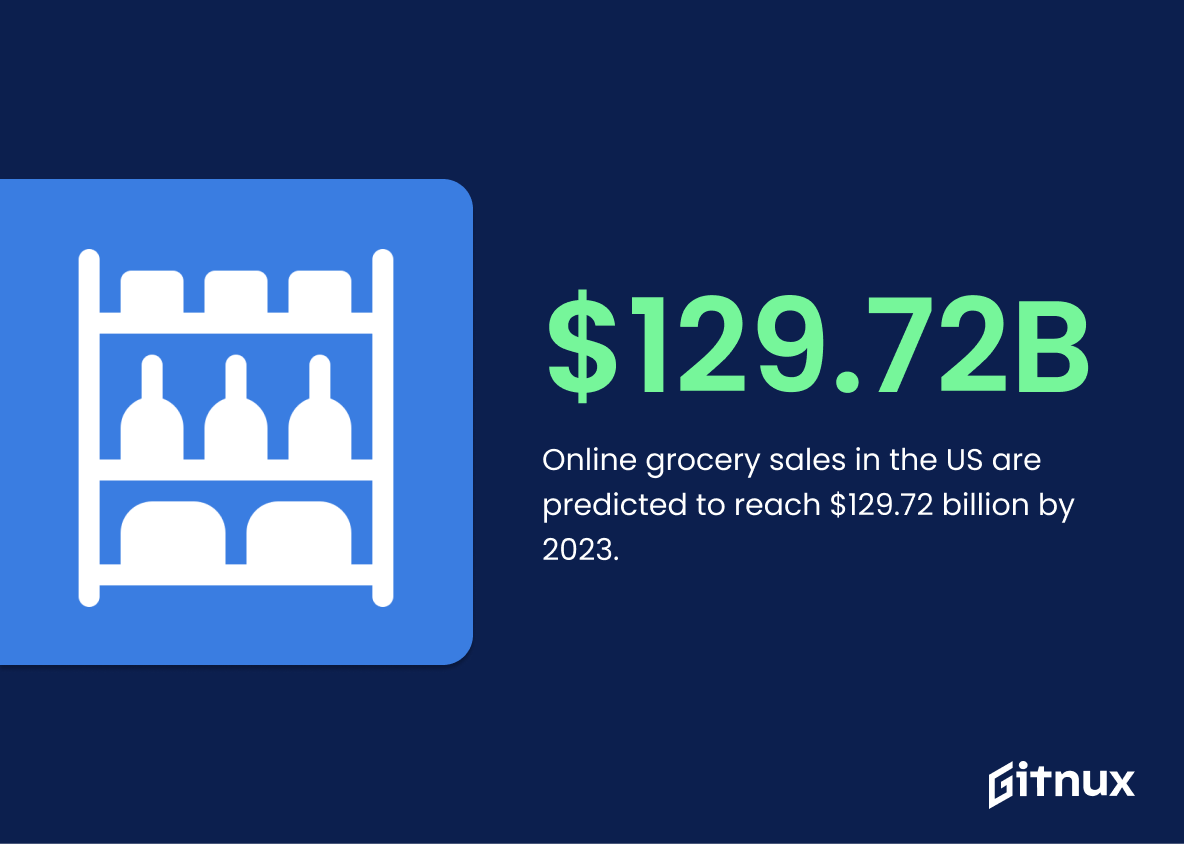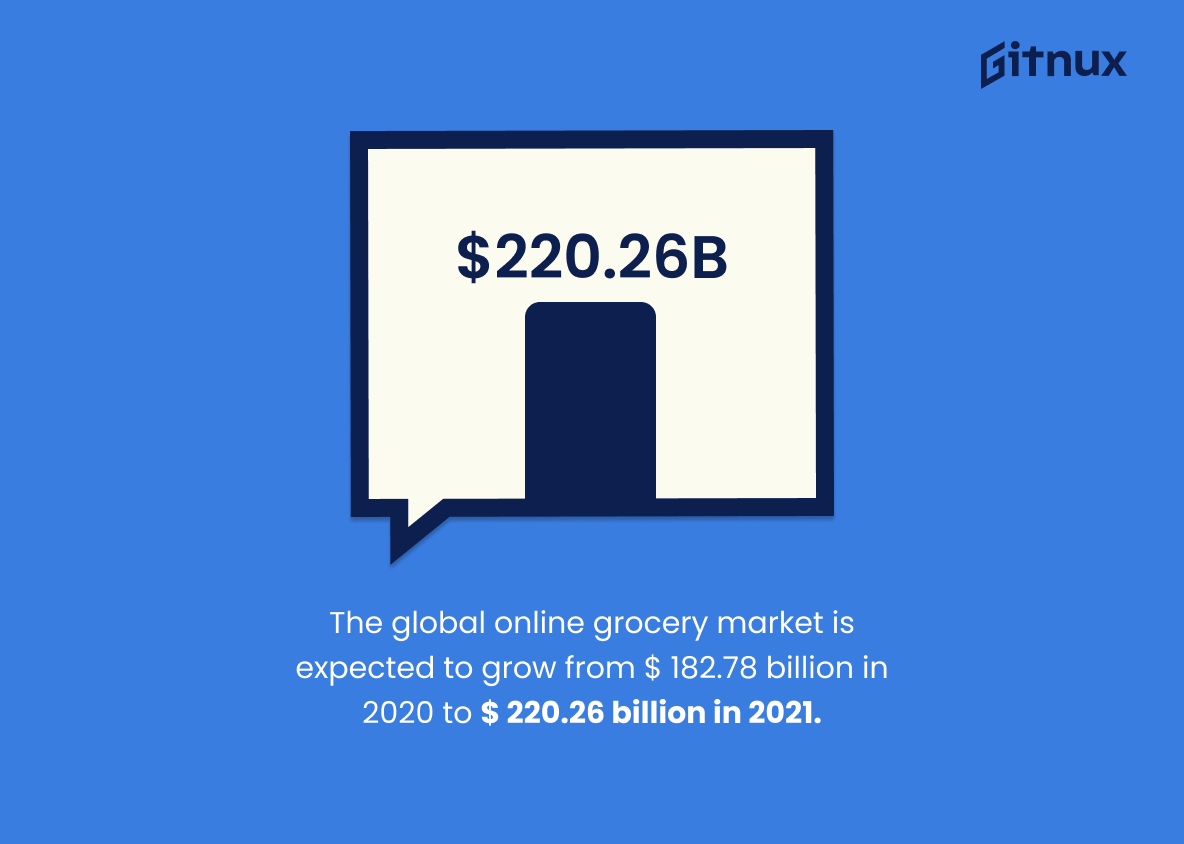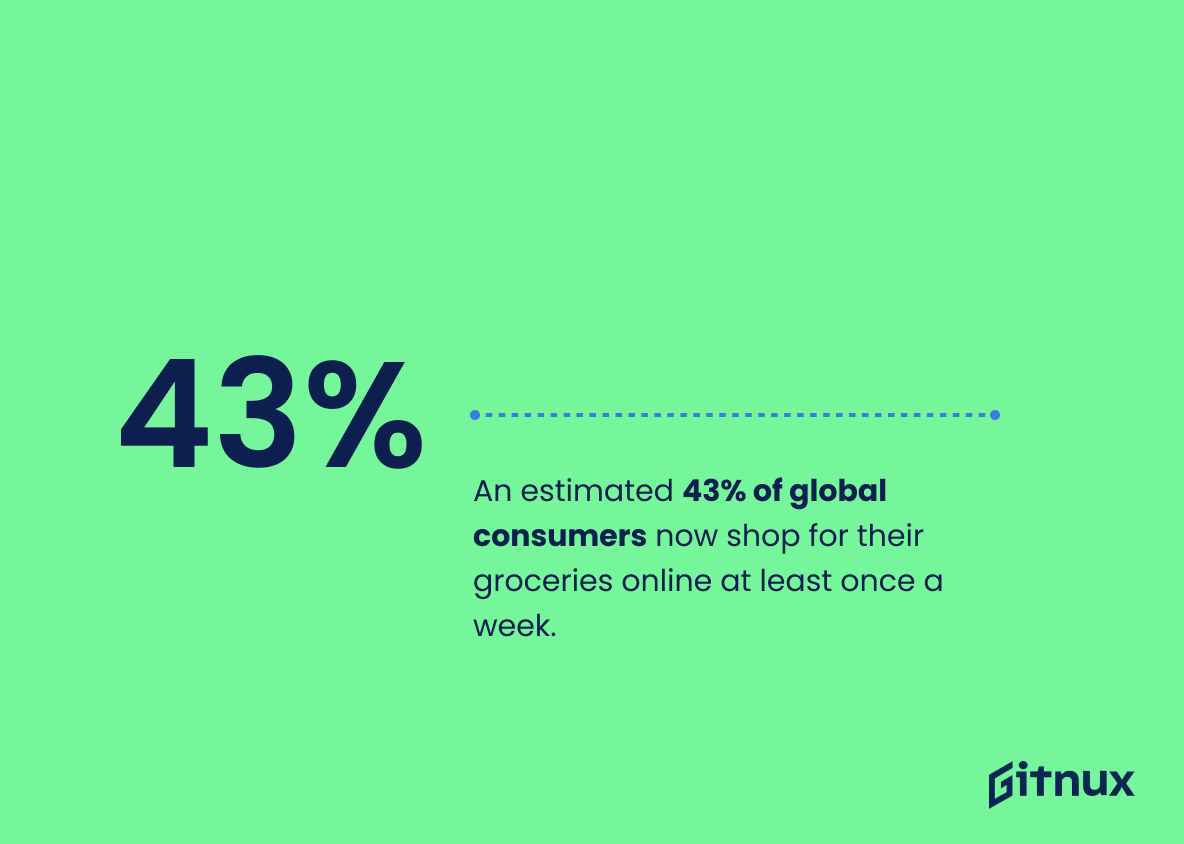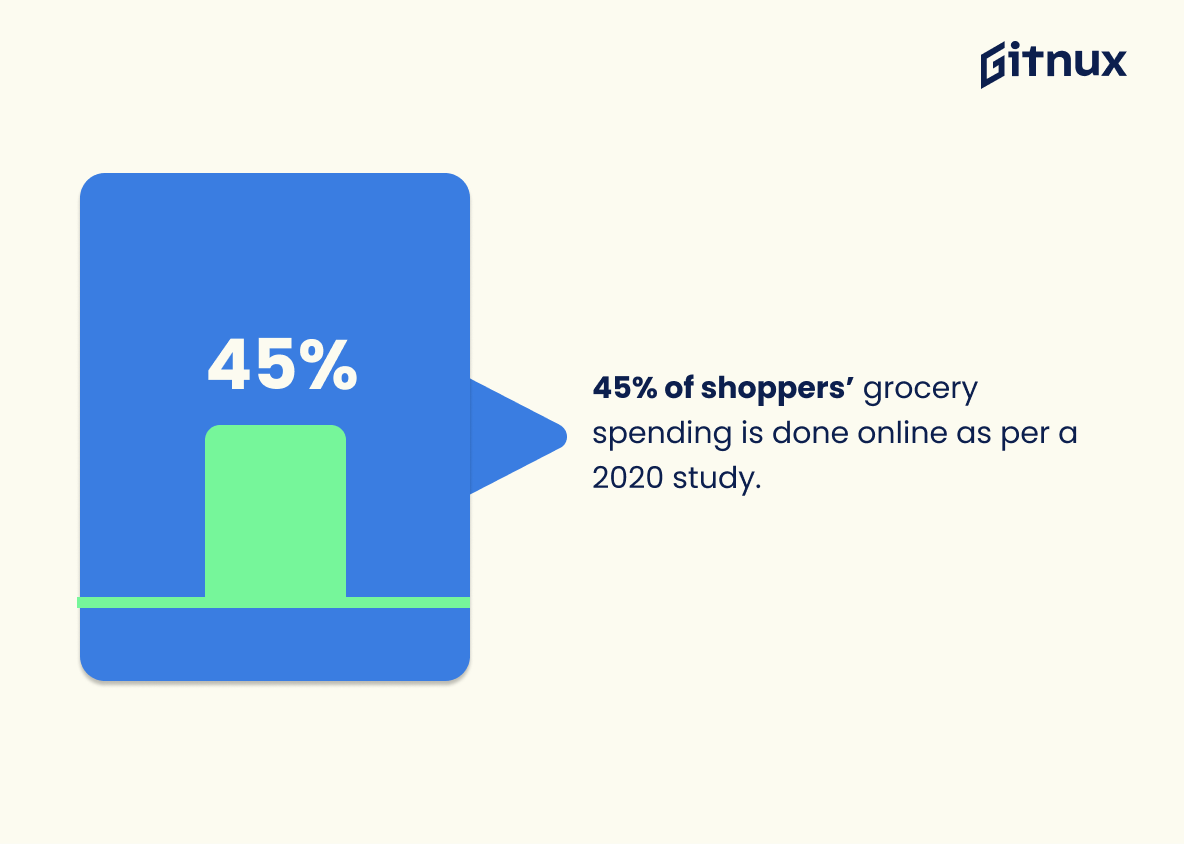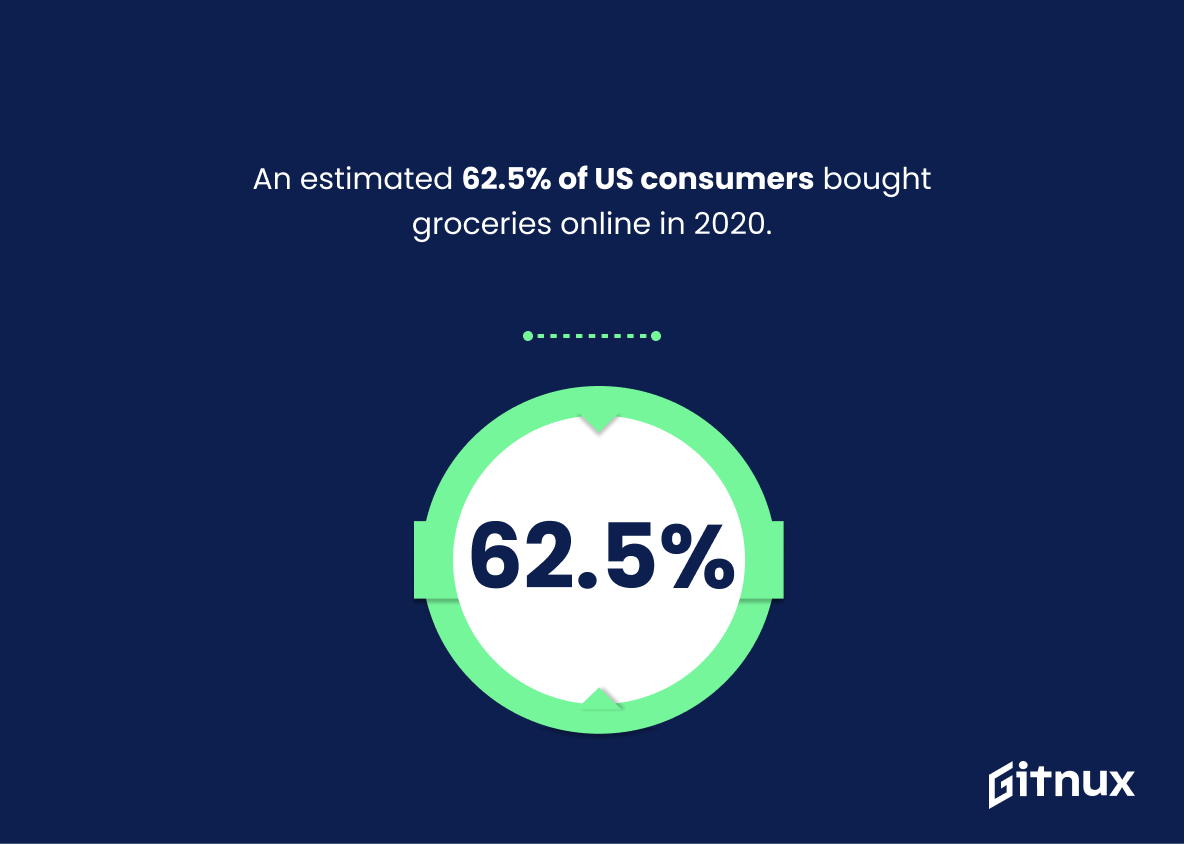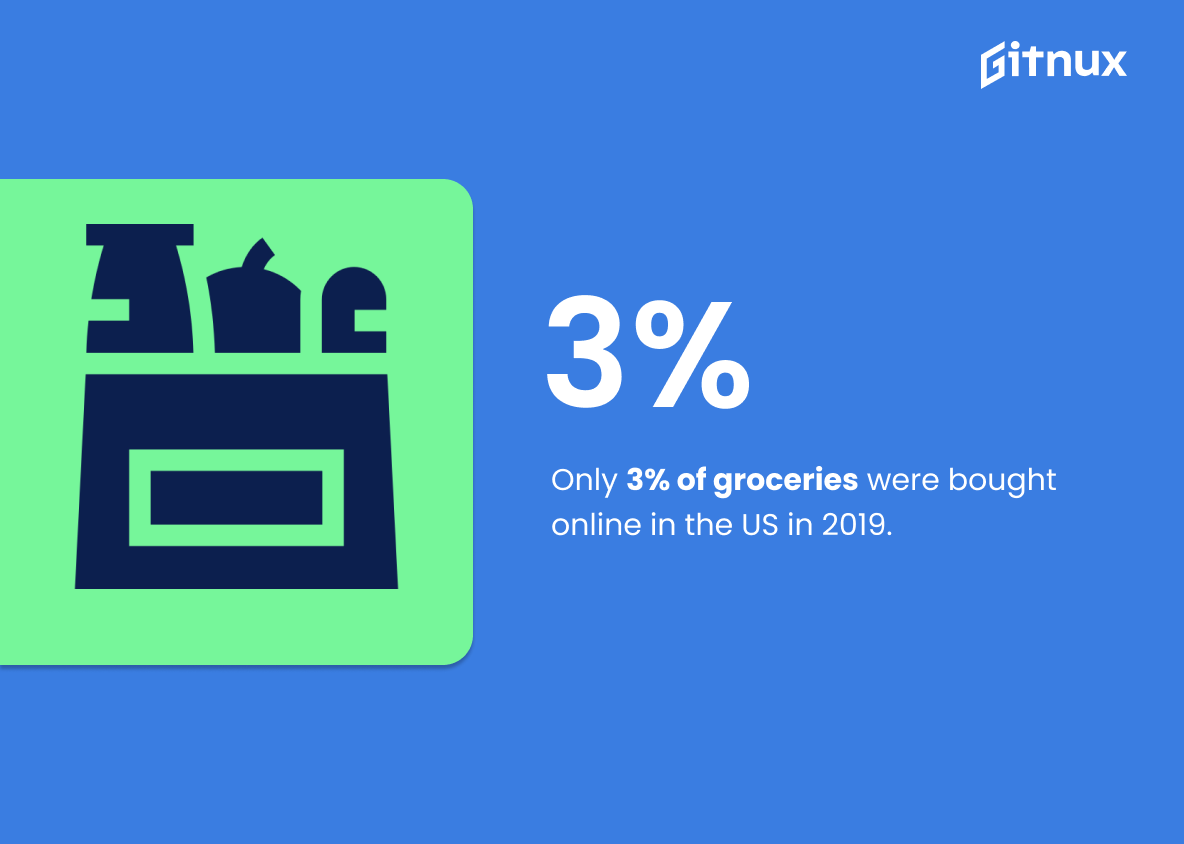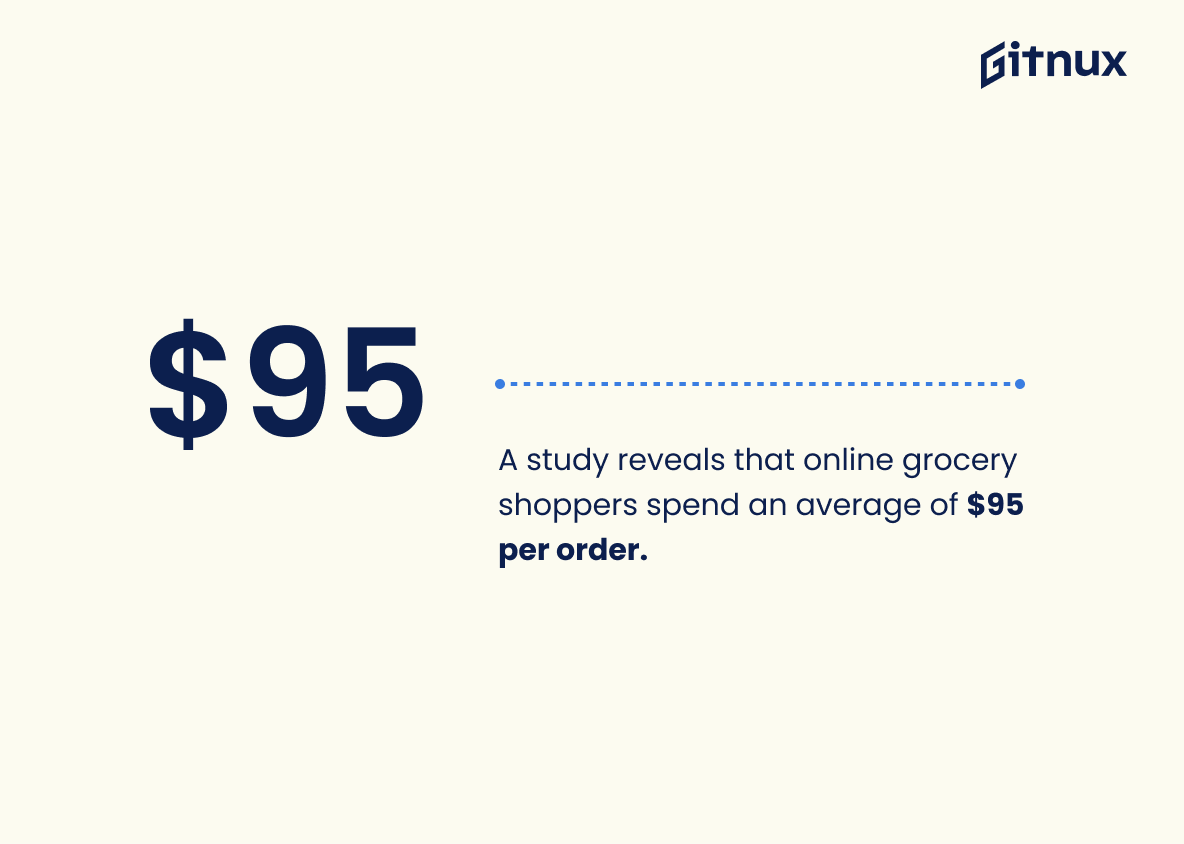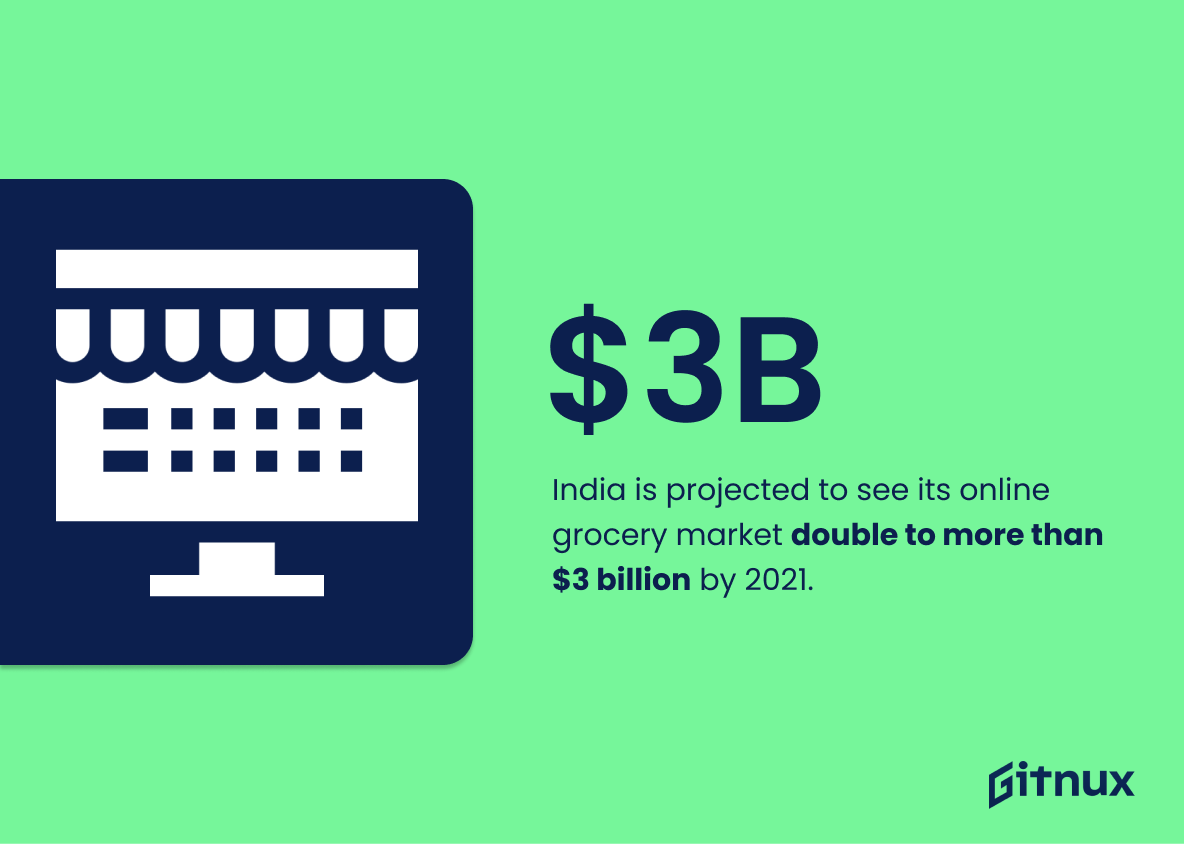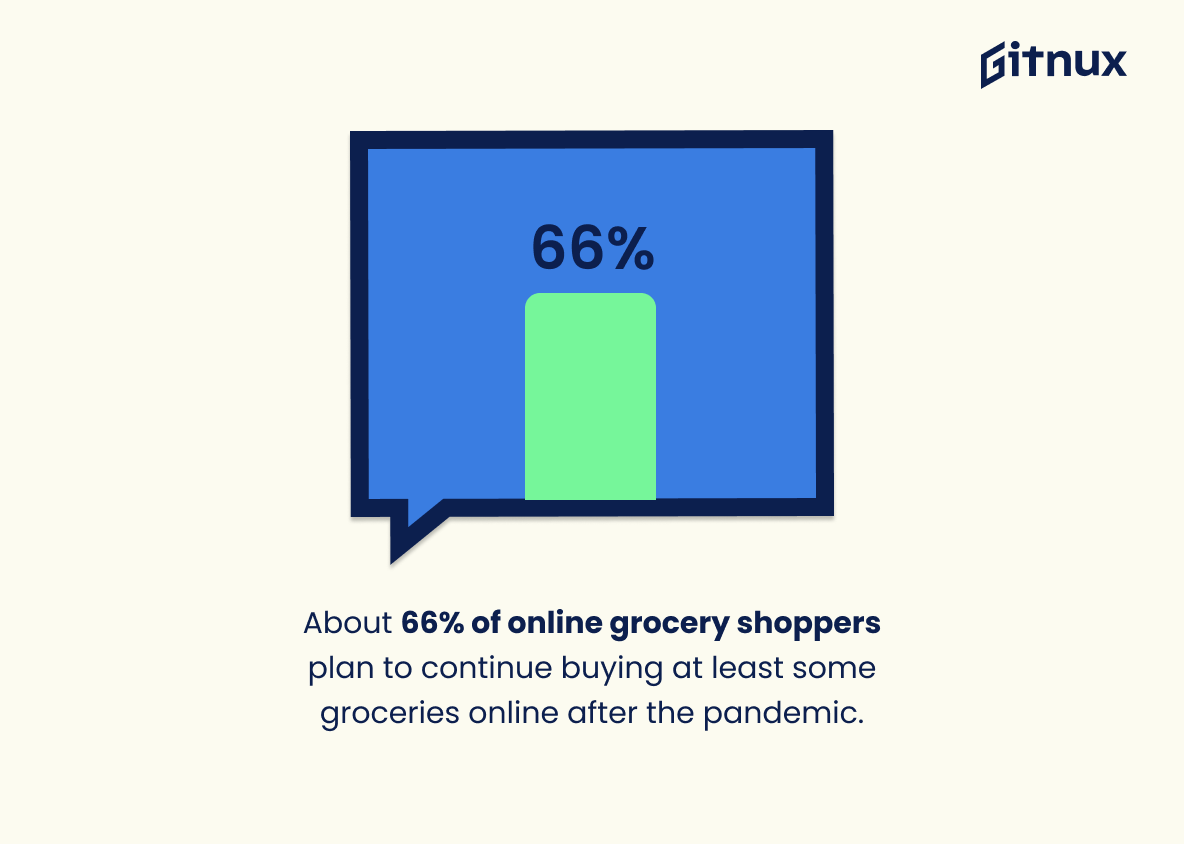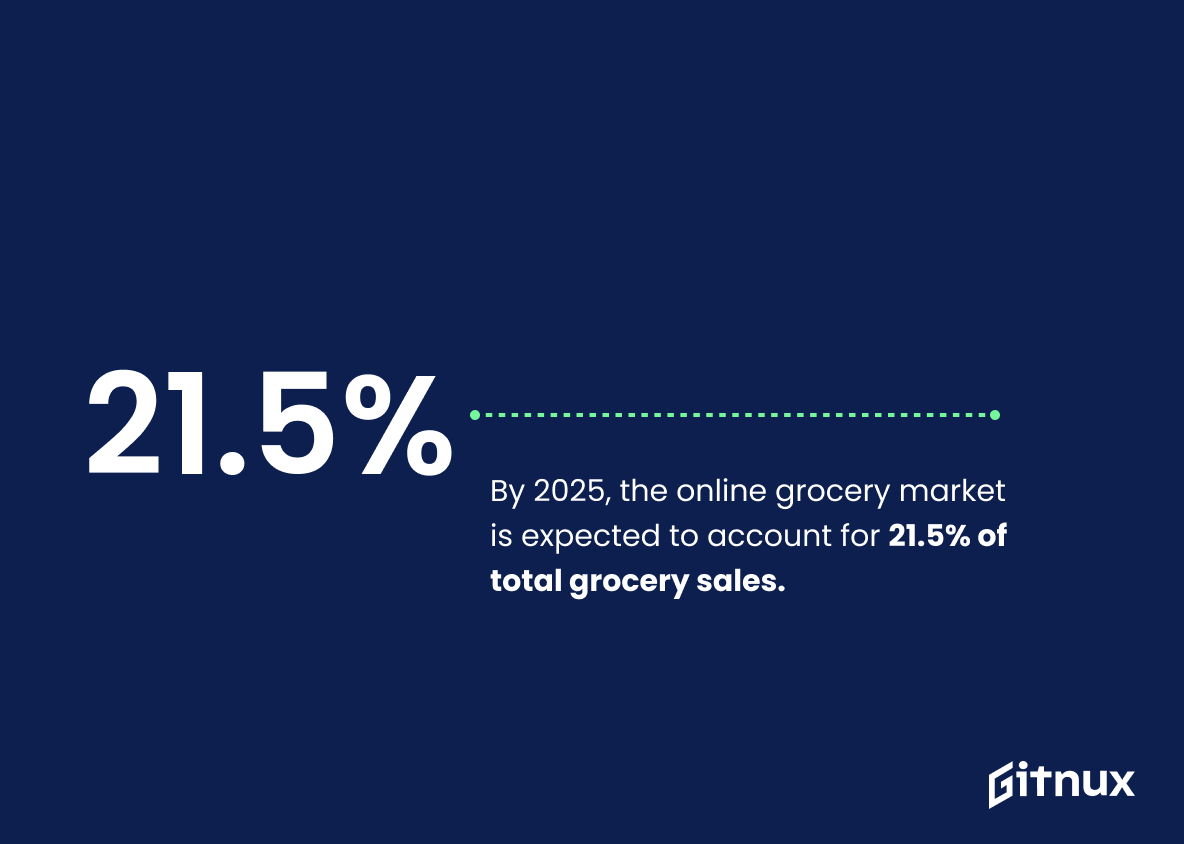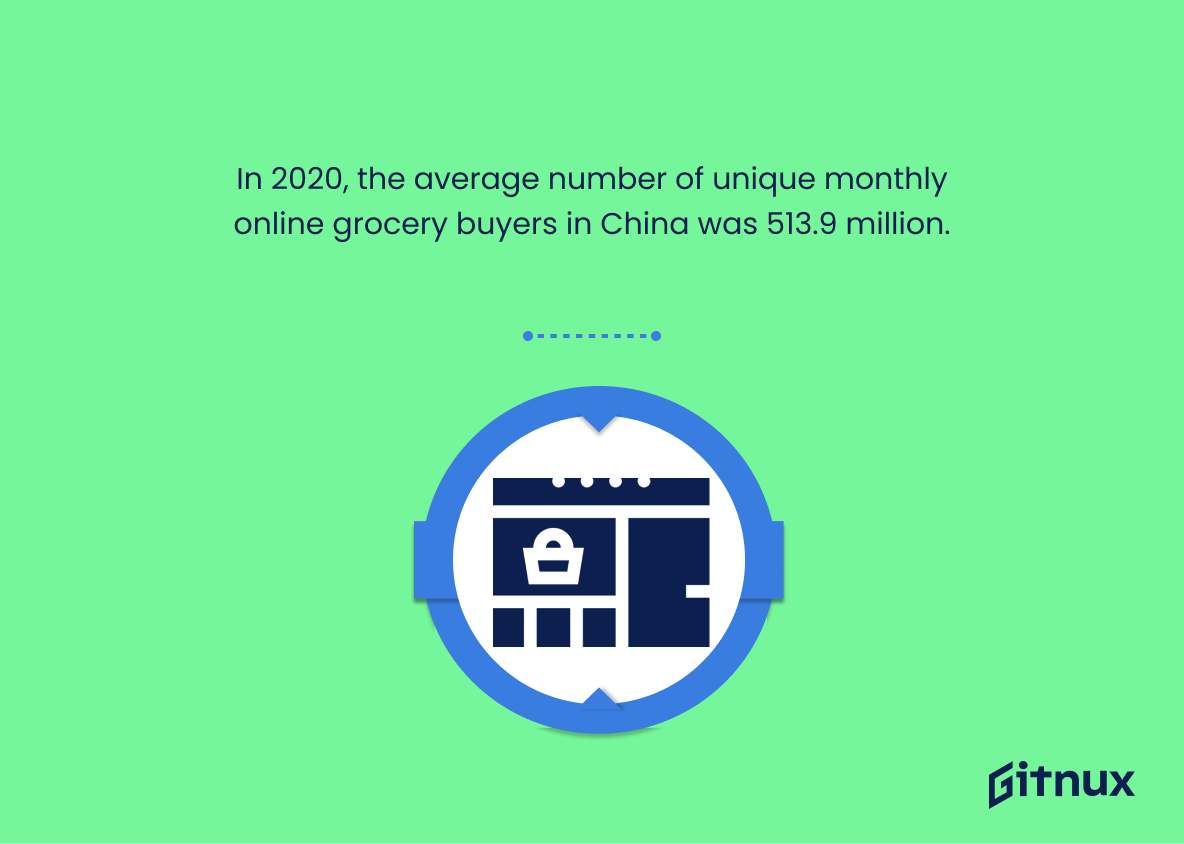Welcome to the fascinating world of online groceries – a burgeoning industry that’s reshaping how consumers shop for their daily necessities. As technology continues to evolve, more consumers are ditching traditional brick-and-mortar stores for digital marketplaces that offer unbeatable convenience. This evolving landscape of online grocery shopping offers incredible growth potential and is poised to redefine the future of retail. To help you better understand this dynamic shift, we’ve compiled the most current online grocery industry statistics. We will delve into consumption trends, customer behavior, market leaders, and project growth, painting a clear picture of where the industry stands today and where it’s headed tomorrow. Keep reading to stay one step ahead of a rapidly growing trend in online retail shopping.
The Latest Online Grocery Industry Statistics Unveiled
Online grocery sales in the US are predicted to reach $129.72 billion by 2023.
This particular projection, indicating that online grocery sales in the US will hit the astronomical sum of $129.72 billion by 2023, paints a vibrant portrait of the untapped potential that exists within the online grocery sector. It underpins the compelling narrative of a rapidly flourishing industry, gaining momentum at an unparalleled pace. The statistic serves as an invaluable compass for businesses, investors and marketers seeking to navigate the lucrative terrain of e-commerce.
From a consumer perspective, it’s indicative of a behavioural shift steering consumers towards embracing the convenience offered by online grocery shopping. It’s not just a number, it’s a testament to the transformative power of technology, revolutionizing one of the most fundamental aspects of our lives – grocery shopping.
In essence, this looming $129.72 billion future adds an electrifying spark to the dialogue surrounding online grocery industry statistics, providing readers with a tangible grasp of the incredible growth trajectory this industry is projected to follow.
The global online grocery market is expected to grow from $ 182.78 billion in 2020 to $ 220.26 billion in 2021.
Undeniably, the projected leap in the global online grocery market from $182.78 billion in 2020 to a whopping $220.26 billion in 2021 serves as a signal flare illuminating the dynamic landscape of the online grocery industry. It’s an unequivocal demonstration of escalating consumer reliance on digital shopping channels, which can be attributed to factors such as increasing internet penetration, lifestyle changes, and the after-effects of the COVID-19 pandemic. For those who gaze keen-eyed at industry trends and statistics in the blog post, this growth factor becomes an indispensable touchstone for understanding the magnitude of ongoing shifts, the rising wave of opportunities, and the mounting competition in the online grocery arena.
An estimated 43% of global consumers now shop for their groceries online at least once a week.
Unearthing the power of this impeccable statistic – ‘An estimated 43% of global consumers now shop for their groceries online at least once a week’, brings a spotlight to the dynamic evolution and potential growth in the online grocery industry. This crucial indicator illuminates the skyrocketing convenience and penetration of digitization in daily life, offering deep insights on consumer preferences and habits. It underlines the significant proportion of consumers embracing online grocery shopping, making this sector ripe with opportunities for existing players and newcomers alike. As food for thought for marketers, this statistic highlights the imperative for crafting effective strategies to meet the rising demand and to stay competitive in this ever-evolving landscape.
45% of shoppers’ grocery spending is done online as per a 2020 study.
Delving into the digital boom, one uncovers a nugget from a 2020 study in online grocery shopping: a whopping 45% of shoppers cast their monetary vote in favor of online grocery spending. This insight paints a vivid picture of a power shift in the world of purchasing, veering away from traditional, in-person shopping methods. An online market drenched in nearly half of shoppers’ food spending undeniably narrates the accelerated embracement of virtual grocery stores. As a result, key industry players and potential entrants can glean valuable insight on consumer behavior and preferences when refining their strategic vision. It also serves as a strong indicator for industry growth and future trends that will shape the online grocery landscape.
An estimated 62.5% of US consumers bought groceries online in 2020.
In the terrain of online grocery industry statistics, a close examination of the highlighted figure, an estimated 62.5% of US consumers buying groceries online in 2020, constructs an intriguing narrative. It stands as an emblem of the sea change in consumer behavior, with more than half of American consumers joining the online shopping bandwagon, noticeably swaying towards digital channels for their grocery needs. On less visible layers, it serves as a barometer that gauges the momentum of the eCommerce industry It’s a clear signal to investors about rapidly shifting market trajectories while helping businesses understand and mobilize for this digital tide. The statistic is thereby a powerful lens, presenting a sharper understanding of market trends, investment opportunities, and forecasts in the online grocery landscape, reaffirming the industry’s significance in the era of digital transformation.
Only 3% of groceries were bought online in the US in 2019.
Surely, like a tiny seed that grows into a giant tree, that 3% constitutes just the budding stage of the online grocery market in the US in 2019. It serves as an indicative yardstick of the burgeoning e-commerce sector. Further, it hints towards an immense and nearly untouched potential for growth, showing an inherent opportunity for players in the digital marketplace to expand their reach. The awareness of this statistic is akin to understanding an unexplored terrain, helping businesses to strategize their online efforts, and navigate through consumer behavior, technological advancements, and competition trends. Hence, this seemingly diminutive figure indeed serves as a barometer of the prospect the future holds for the growth trajectory of the online grocery business.
In 2020, 78.7% of the online grocery sales were done by people aged between 30-59 years.
Exploring further into the significance of the statistic – that in 2020, 78.7% of online grocery sales were executed by individuals aged between 30-59 years – it paints a vivid picture about understanding customer demographics in the blog post on online grocery industry statistics. This statistic serves as a compass, guiding businesses and marketers on who to target within the broad online grocery sales ecosystem.
When crafting marketing strategies, appealing graphics, offers, and understanding user-interface preferences, this statistic becomes pivotal in facilitating decisions to engage customers in the age bracket of 30-59 years more effectively, as they form the bulk of the online grocery consumer base. It also echoes the necessity for businesses to be more tech-savvy to encourage buyer participation from other age demographics, thereby broadening their customer base.
Hence, the illumination of this statistic in the context of the blog post helps provide a clearer road map of audience segments, influencing the success of sales and marketing strategies in the online grocery industry.
A study reveals that online grocery shoppers spend an average of $95 per order.
Diving deep into the online grocery industry, the fact that an average online grocery shopper spends $95 per order becomes a substantial plot twist. The narrative unfolds around this figure, positioning itself as a compass, guiding retailers to forecast potential revenues. Think of it as a glue that connects consumer behavior with business tactics, potential profit calculation, and market strategy formation. Highlighting trends in consumer spending allows businesses to intelligently tailor their strategies and gauge success. Taken a step further, considering this value as an anchor point might be crucial for small businesses calculating their venture’s feasibility or conglomerates making efforts to increase their market share.
In 2020, 20% of all grocery sales in the US were expected to be conducted online.
The elucidation of the statistic, which forecasts that one-fifth of all grocery sales in the US were expected to be conducted online in 2020, embarks on a journey across the dynamic landscape of e-commerce. It unveils the essence of a transformation in which the once traditional and tactile experience of grocery shopping is getting encapsulated into the digital realm. It underscores the potency of the Online Grocery Industry, spotlighting the increasing consumer receptiveness and adaptability towards e-grocery trends. A 20% prediction not only substantiates the rising prominence of online grocery sales but also provides a clear indication of the future trajectory toward digital convenience. Ultimately, this data point becomes a key to unlock a more profound understanding of the burgeoning market trends, customer preferences, and potential opportunities nestled within the bustling online grocery industry.
Around 10% of consumers are ordering groceries online more than once a week.
Understanding the pulse of consumer behavior, such as the fact that approximately 10% of consumers are now ordering groceries online more than once weekly, provides critical insight when assessing the evolving landscape of the online grocery industry. It underlines a significant shift in shopping habits, indicating that a significant proportion of consumers are embracing the convenience, time-saving aspects, and safety offered by online grocery shopping. Moreover, it highlights an intensified frequency of purchase, hinting towards a growing consumer trust in e-grocery platforms. Such data acts as a spotlight illuminating trends that have substantial implications for businesses in the industry – from marketing strategies and customer retention to inventory management and demand forecasting. Thus, it adds a crucial ingredient in the recipe of understanding and navigating the complex dynamics of online grocery market.
India is projected to see its online grocery market double to more than $3 billion by 2021.
Highlighting India’s rapidly expanding online grocery market, which is projected to burgeon and surpass the $3 billion mark by 2021, can provide readers an insightful peek into fascinating growth dynamics. This conjecture is not just a mere number – it’s an eloquent testament to the enormous potential the industry holds which is synonymous with profuse opportunities for entrepreneurs, investors, and economists interested in this domain. This prophecy also underscores the transforming consumer patterns in India, which is steering from traditional physical grocery shopping to the more contemporary, digital experience, thus creating a paradigm shift in the nation’s grocery landscape. In the grand scheme of online grocery industry grapevine, such projections act as pivot points for future strategies, indicating golden periods of investments and prosperity.
About 66% of online grocery shoppers plan to continue buying at least some groceries online after the pandemic.
Delving into the crux of this compelling statistic, it provides valuable insight for both existing online grocery platforms and those considering venturing into this thriving market. As we unravel this data, it clearly emphasizes the expected longevity and potential growth within the online grocery industry, even post-pandemic. This prediction of sustained consumer interest is indicative of the fact that the shift from traditional grocery shopping to online alternatives was not merely out of necessity, due to the pandemic, but also due to the convenience and efficiency associated with it. Consequently, this statistic serves as a bold and encouraging forecast that could catalyze strategy formulation, marketing decisions, and future investments in the online grocery industry. It also fuels discussion around enhancing customer experience, reliability, and trust in online grocery operations, paving the way for innovation and expansion.
By 2025, the online grocery market is expected to account for 21.5% of total grocery sales.
Forecasting a significant jump to 21.5% in online grocery market share by 2025 is a striking prodigal advance in the industry. This projected surge not only demonstrates the shifting consumer behavior towards digital shopping, but also epitomizes the incredible growth speed of the e-grocery segment. The insight allows bloggers to gauge the rising prominence of digital platforms turning into prominent grocery shopping destinations. Hence, it’s an impetus for businesses to ramp up their online operations, and for stakeholders to realize the burgeoning investment potential in online grocery space. This statistic thereby vividly paints a picture of where the industry is heading, equipping players to align their strategies accordingly.
Over 60% of online grocery shoppers are women.
Highlighting the fact that over 60% of online grocery shoppers are women paints a vibrant picture of the demographic landscape in the Online Grocery Industry. It’s the digital age’s tale of consumer behavior, revealing how eCommerce has nestled its way into the fabric of women’s kitchen regimen. This compelling figure shines a light on the gendered behaviors in digital consumerism, underscoring women’s dominance in online grocery interactions. Therefore, this statistic is pivotal, it’s the pulse, guiding online grocery marketers towards fine-tuning their strategies, focused more on women shoppers. It suggests a need for tailored services, gender-specific promotions and an overall women-centric approach to enhance user experience and boost sales in the online grocery industry. So, this isn’t just a number; it’s a key that could unlock a treasure trove of opportunities for the savvy marketer.
In 2020, the average number of unique monthly online grocery buyers in China was 513.9 million.
Highlighting this impressive figure in a blog post about online grocery industry statistics underscores the massive scale and potential of the digital grocery market in China. With an average of 513.9 million unique online grocery buyers per month in 2020, it’s evident that this sphere has not only grown considerably, but is also a vital part of the country’s retail landscape. Serving as a clear indicator of the online grocery industry’s surge, this statistic stands testament to the fact that millions of people have seamlessly adapted to online buying – showcasing the channel’s convenience, efficiency, and the large customer pool available to be tapped into by businesses. With the number set to increase, this strong online consumer behavior hints at a promising trajectory for the industry’s future growth.
Amazon’s online grocery sales increased by 50% in quarter one of 2020.
In uncovering the dynamic panorama of the Online Grocery Industry, this quantum leap of a 50% increase in Amazon’s online grocery sales in quarter one of 2020, provides a riveting narrative about the force and momentum of growth that the sector is experiencing. This percentage becomes a lighthouse, illuminating the immense potential of the digital grocery marketplace, as well as the consumers’ evolving preference towards online shopping, drastically accelerated by external factors such as the pandemic. Moreover, as Amazon signifies a paragon of success within the online platform, this substantial surge reflects the robust health and positive future progression of the industry.
In the UK, 62 percent of online grocery shoppers have used a mobile device in 2020.
Drawing attention to the fact that 62 percent of online grocery shoppers in the UK utilized a mobile device in 2020 reveals a seismic shift in consumer habits. It underscores the rising trend of mobile commerce and highlights the importance for grocery retailers to optimize for mobile platforms. It is no longer an option but a necessity for businesses to offer a seamless and efficient mobile shopping experience. This digit increases our understanding of the driving forces behind the evolving online grocery landscape, and allows us to predict and shape the future direction of this industry.
Walmart Grocery app downloads grew by 460% in Feb-April 2020 compared to 2019.
Exemplifying the accelerating shift in public shopping preferences, the impressive surge of 460% in Walmart Grocery app downloads in Feb-April 2020, compared to the same period in 2019, can’t be overlooked. This spectacular leap speaks volumes about the transition towards online grocery shopping and underlines digital platforms’ growing prominence in the industry. It further illustrates the shifting tide in the habits of the everyday shopper, induced by various factors including convenience, range of choices, and sometimes, global crises. More than just a figure, this statistics paints an evocative picture of the profound transformation occurring within the grocery industry landscape. Unveiling the depth of the impact made by digital platforms, it provides us with a compass guiding the journey into future shopping trends in the grocery market.
China’s rural online retail sales reached CNY 1.79 trillion in 2020, 30.4 percent of total national online retail sales.
Mirroring the reflection of the growing digital marketplace, China’s robust rural online retail sales, amassing a staggering CNY 1.79 trillion in 2020, offers a surreal snapshot of this transformation. Seizing a hefty 30.4 percent share of the total national online retail sales, this stellar rise exemplifies the mushrooming popularity of online purchases among the rural populace.
In the context of online grocery, this development has unexplored territories. Disruptive changes in shopping habits, particularly in rural China, imply vast potential for the online grocery industry. There is a surge in internet access and a confident leap into digital transactions, allowing grocery platforms to tap into this thriving market. Therefore, the Chinese rural market segment may become a goldmine for investors and stakeholders in the online grocery industry, setting the pace for global trends. The gravity of this statistic lies not only in its indication of the current scenario but also in its promise for the future.
Conclusion
In the digital age, the online grocery industry has shown a significant growth with consumers appreciating the convenience and accessibility it offers. The in-depth analysis of online grocery industry statistics presented in this blog confirms a positive trend towards online grocery shopping, backed by technological advancement, changing consumer lifestyle, and demand for quick services.
The staggering numbers represent a tremendous opportunity for existing online marketplaces as well as new entrants. Players must optimize their offerings to keep up with the changing demands and propel towards a more beneficial, personalized, and efficient shopping experience. From all indications, the industry is far from reaching its zenith; instead, it holds a promising future that’s ripe for exploration. Continuous monitoring of industry statistics is imperative to track this volatile yet exciting space.
References
0. – https://www.www.businesswire.com
1. – https://www.www.reportlinker.com
2. – https://www.www.grocerydive.com
3. – https://www.www.forbes.com
4. – https://www.www.supermarketnews.com
5. – https://www.www.statista.com
6. – https://www.www.mercatus.com
7. – https://www.www.businessinsider.com
8. – https://www.www.cnbc.com
9. – https://www.www.theverge.com
10. – https://www.www.prnewswire.com
11. – https://www.www.emarketer.com
